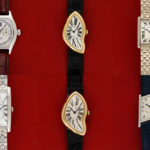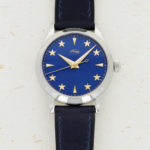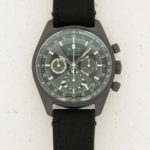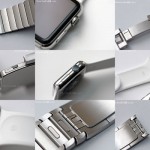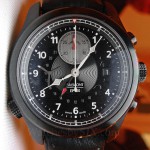REVIEW: Loupe System – The Quest For A Perfect Loupe
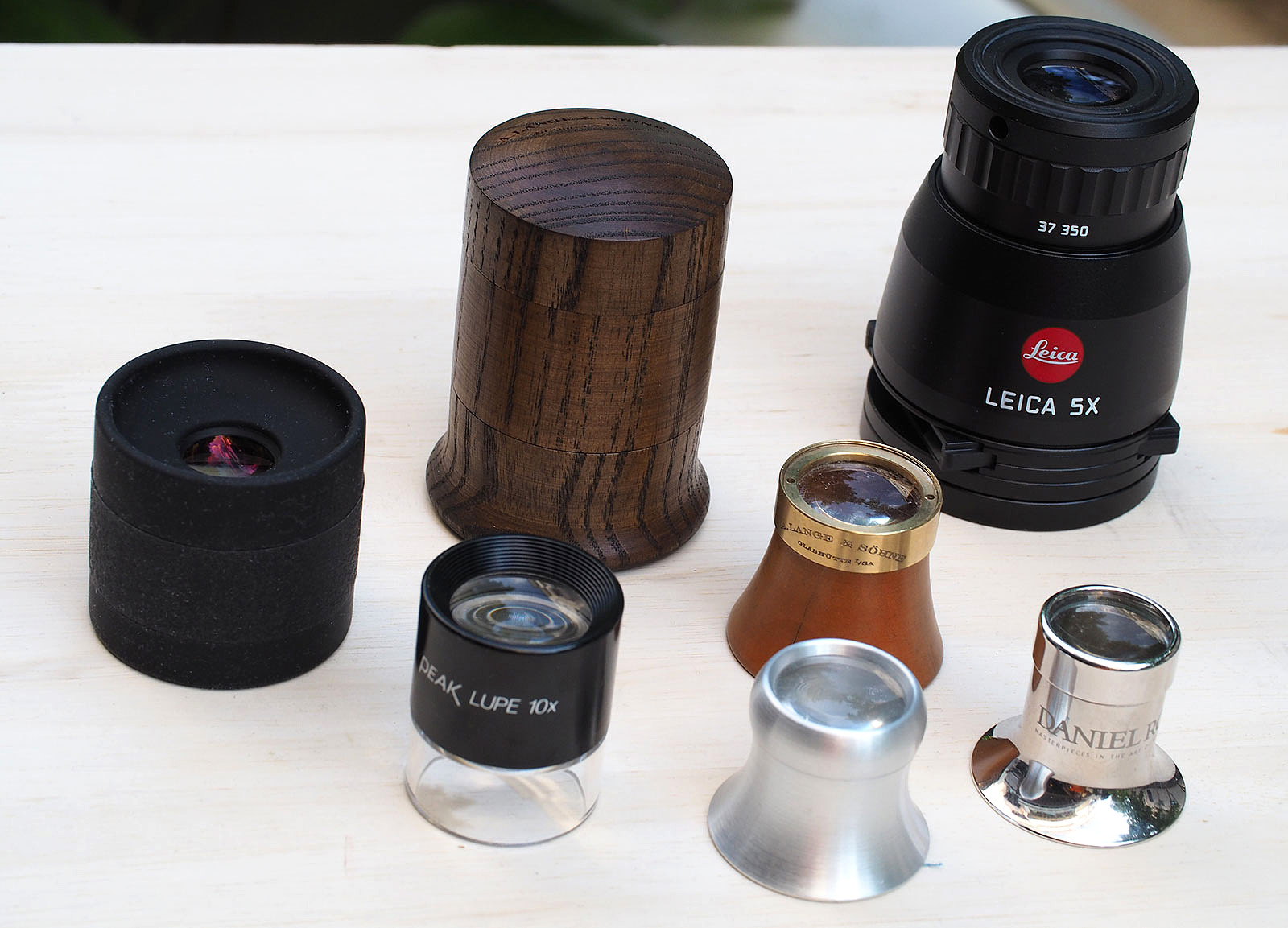
Conceived by a watch collector for fellow enthusiasts, Loupe System is a 6x magnification loupe. Here our contributor Eric Ho reviews the base model in the Loupe System line-up, the Model 01, and compares it to the competition from he likes of Leica, Zeiss and Nikon.  Age and eyesight have an inversely proportional relationship well demonstrated over time. Presbyopia hit me at the moment I turned 40, and the first years of adjustment were trial and error experiments with various eyewear, mobile phone, and computer font configurations. The usual eyesight constraints were made worse by an addiction to all things miniature and their accompanying details. My original plastic modelling hobby started from when I was eight years old with a 1/50 scale Tamiya aircraft, and then grew from 1/48 scale, up to 1/32, and then 1/24. Nowadays 1/6 running models dominate my work table as these are relatively easier to work with diminished eyesight performance. My other hobby in horology also changed from visible complications and chronographs to relatively simpler displays of time. This was when I also came to the inevitable conclusion that the simpler dials, without the extra hands, sub dials, or skeleton frames, required exacting craftsmanship and detail. Fine enamel, guilloche finishes, engine turned, honeycomb, etc, in the size of a watch dial had to be perfect to demonstrate the best skills of the watchmaker.
Age and eyesight have an inversely proportional relationship well demonstrated over time. Presbyopia hit me at the moment I turned 40, and the first years of adjustment were trial and error experiments with various eyewear, mobile phone, and computer font configurations. The usual eyesight constraints were made worse by an addiction to all things miniature and their accompanying details. My original plastic modelling hobby started from when I was eight years old with a 1/50 scale Tamiya aircraft, and then grew from 1/48 scale, up to 1/32, and then 1/24. Nowadays 1/6 running models dominate my work table as these are relatively easier to work with diminished eyesight performance. My other hobby in horology also changed from visible complications and chronographs to relatively simpler displays of time. This was when I also came to the inevitable conclusion that the simpler dials, without the extra hands, sub dials, or skeleton frames, required exacting craftsmanship and detail. Fine enamel, guilloche finishes, engine turned, honeycomb, etc, in the size of a watch dial had to be perfect to demonstrate the best skills of the watchmaker.
.jpg) |
| Cartier guilloche dial |
.jpg) |
| Jaeger-LeCoultre miniature enamelling |
Perfect 20/20 eyesight in my youth meant I could actually be less demanding on my optics in the past. The naked eye then could compensate and detect fine details as well as subtle shades even in relatively low light conditions. Using a magnifying glass or loupe just confirmed that what I saw without aid was good enough. I had disdained using watch loupes as most of the watch branded loupes had quality in the domain of giftware or marketing material, and usually projecting perceived quality through use of some distracting exotic material such as crocodile, sterling silver, or fine woods. I suddenly became more demanding of accessory optics, more perhaps to make up for my own lessening optical resolution. I already have a magnifying workbench at home, together with a magnifying headset with several lenses that I was using for fine work, but realized that I also needed a proper portable loupe solution as well. The field Serious loupe optics to me had to have serious German, Japanese, or Swiss glass inside. So I delved into the world of medical, industrial, film and camera, watchmaking, and gemstone loupes – hoping to find at least one or two reference standard versions of a portable loupe that would suit my more and more frequent usage.
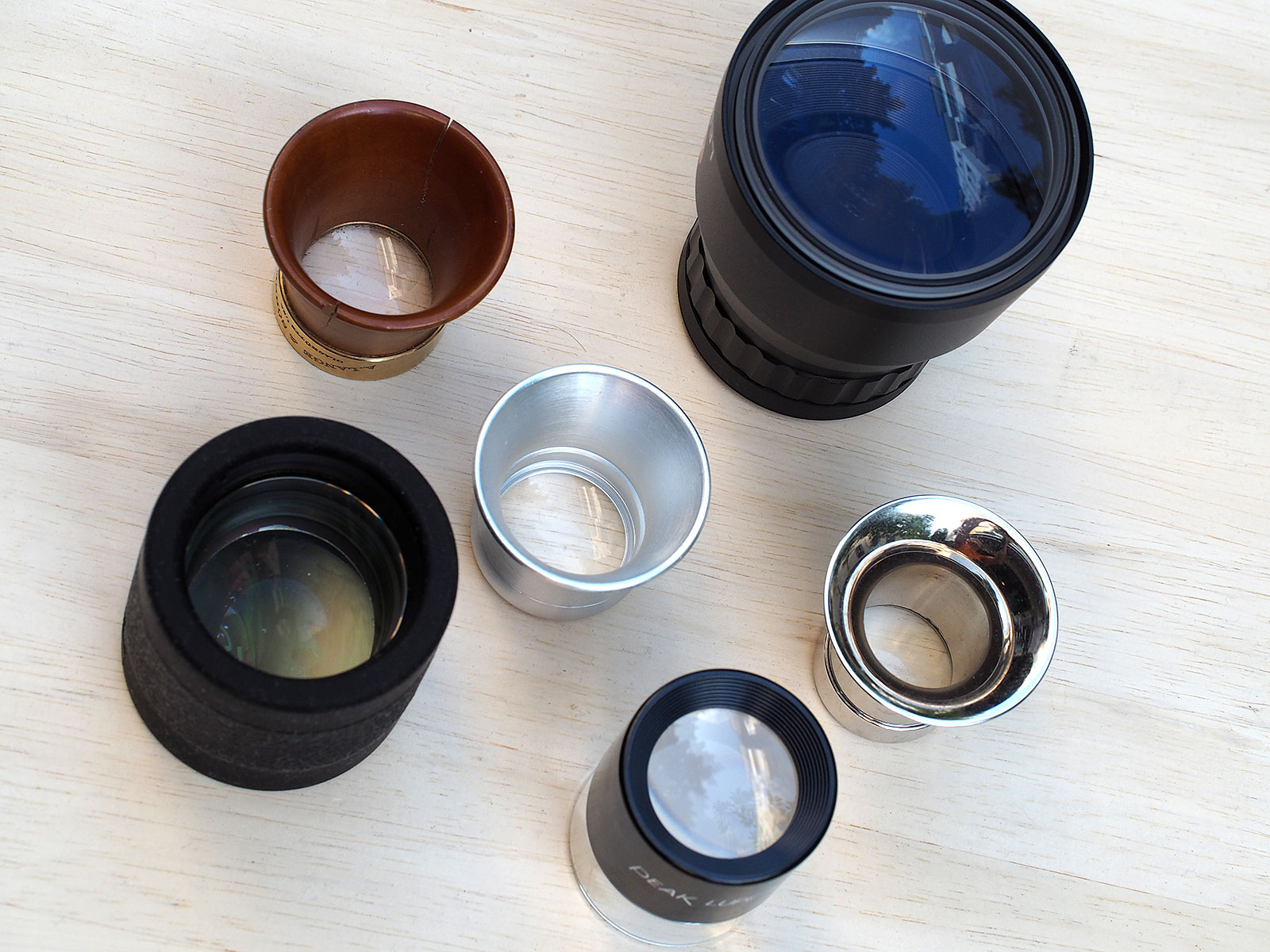 |
| Loupe System at extreme left |
My first requirement was premium optical glass. I borrowed, tried, bought, and sold loupes from Zeiss, Nikon, Schneider, Leica, Bausch & Lomb, etc. Some of these were meant for viewing 35 mm film negatives, and most of these I tried had larger diameters meant to accommodate the negative or slide sizes. The larger objective diameter had a comfortable field of view as well as a larger eyepiece – something I found to be comfortable and easier to use. The more specific watchmaking loupes from Bausch & Lomb I found to be optically good, but had the smaller 25.4 mm (1 inch) diameter on the objective end, and had the usual smaller eyepiece end which required the mandatory squinting effect, something I wanted to avoid. I loved the Leica loupe for its optical quality, but it was built for viewing film slides with the requisite attachments and was a bit too specialized for my viewing purposes. Enter Loupe System The first time I saw the Loupe System in use was at The Hour Glass, a watch retailer in Singapore. The immediate thing that struck me was its build quality, the bulky rubber coated construction gave some hint that it was not just a simple magnifying lens. Examining it further (I didn’t pay as much attention to the array of independents timepieces that were being examined with this loupe), the construction was like that of a camera lens system, using multiple elements. A total of five elements in three groups is used in the Loupe System, giving the user not only crystal clear resolution, but also minimizing the distortion at the edges. The larger field of view is also enabled by a 40 mm objective diameter, with the option of increasing it to 50 mm with a slight compromise in edge distortion.
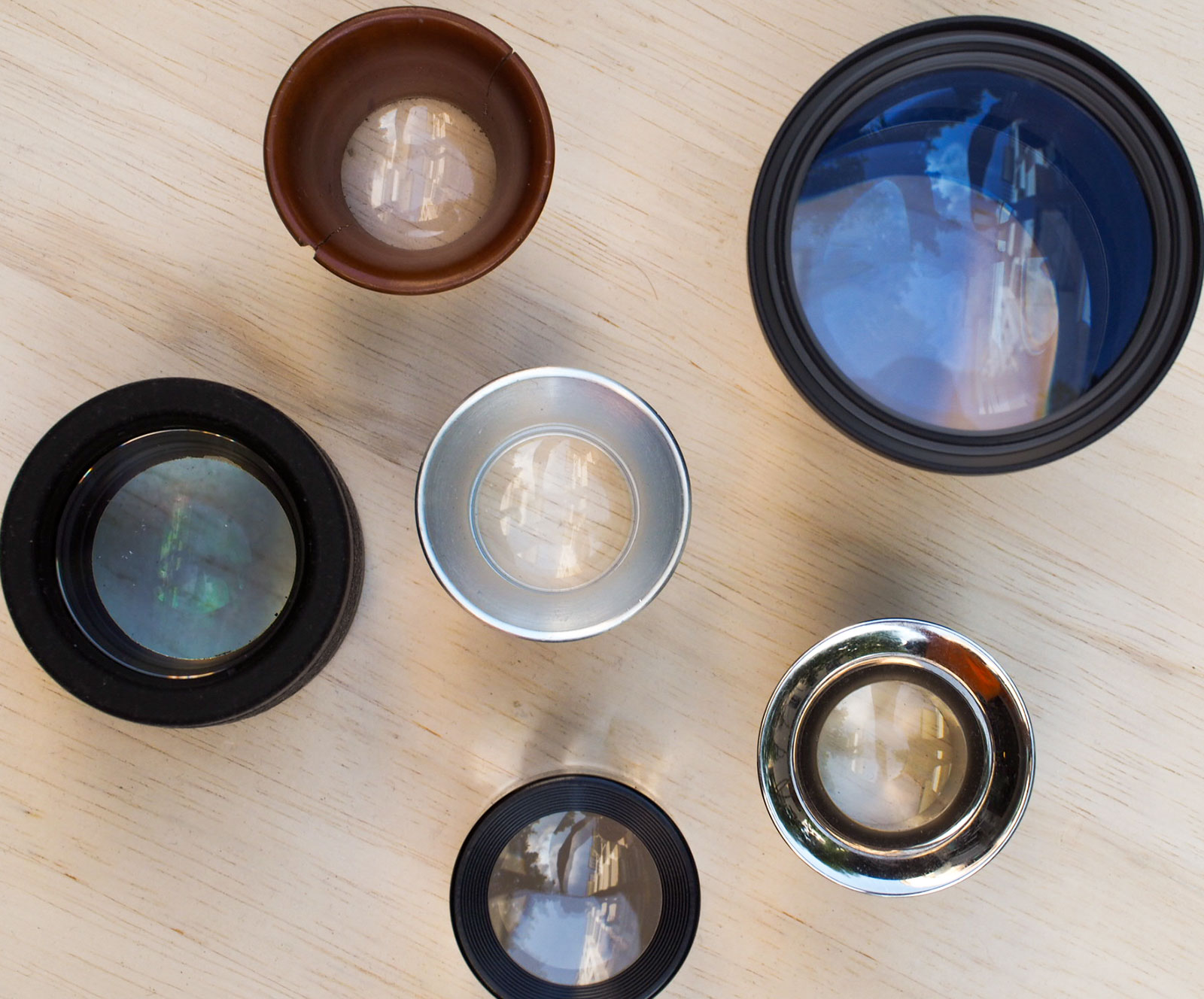
The larger diameter has quite a few distinct advantages over the traditional pocket loupes. Not only does the larger diameter give a larger field of view, but it also allows a naturally brighter image. And that large diameter coupled with the rubber coated construction made it very comfortable to use. No need to squint, no fear of scratching any glass or metallic surfaces, and changed the way a loupe felt and handled. The package The Loupe System also arrived with an equally serious case, a foam lined waterproof Pelican case with a pressure relief valve. This is quite a nice option to store the loupe, although mine immediately went into a low humidity dry cabinet, necessary in this part of the world as the relatively high humidity allows the growth of mould and fungus on lenses and other things.
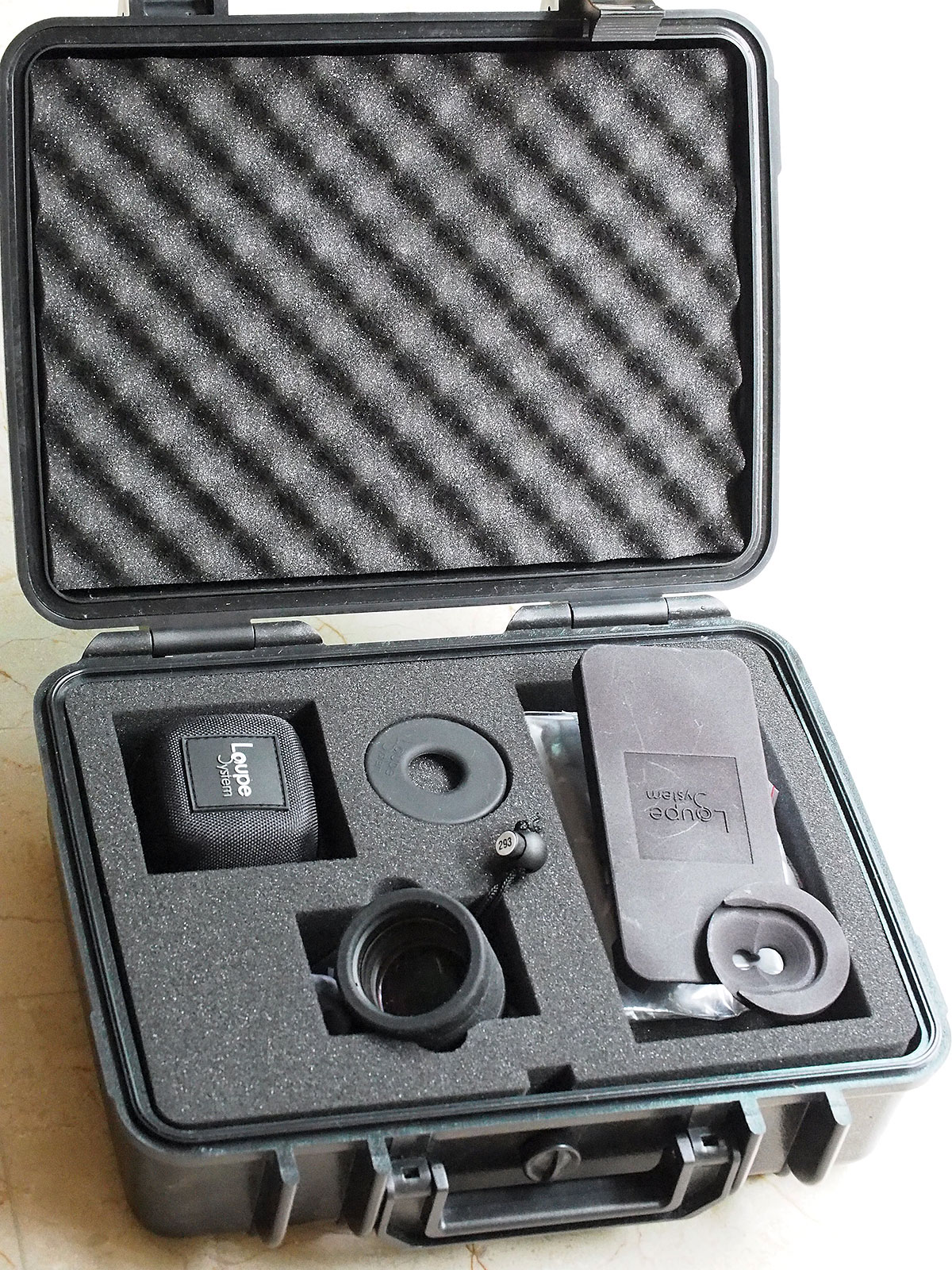
The package also included an additional eyepiece, giving the wider 50mm field of view. There’s also a soft carry pouch, microfiber cleaning cloth, and a semi-hard carrying case. This small pocket case is very useful to travel with, and not be too worried if it joins other occupants such as laptop and phone chargers, toiletries, and other objects common to a carry-on luggage. Another useful optional accessory (that has to be purchased separately), even though it is bulky and makes the phone itself awkward (and now probably slightly obsolete with the iPhone 6) is an iPhone case that lets the user attach the Loupe System to an iPhone 5 or 5S. This is still a viable option that I bring along separately as it is still easier than using a camera with a macro lens. This may need some further development as using this without a controlled lighting environment may not have the best results, although there is supposed to be a LED lighting accessory coming along to address this. Uses The use of the Loupe System is very well documented, and endorsed by the watch manufacturers that you see on Loupe System’s website. The rubber cladding not only protects the loupe itself, but also insulates against any potential contact with delicate timepieces. In that context, this loupe is also useful for inspecting various small precision components in other areas such as in model engineering, bicycling, camera equipment. Ideally all these uses could be performed in a home clean room – complete with a magnifying bench, or magnifying headset – but in a field environment or where you are mobile, a large ‘pocket’ loupe such as this Loupe System achieves the same results without being bound to a fixed area. In the model engineering realm, I found it useful particularly for fine detailing – be it checking cockpit details on model aircraft, or touching up facial features on a toy soldier – it was sometimes quicker to use this than to set up the usual magnifying glass and bench. It was also easier to use in the field when inspecting model engine wear and tear – to look for fine scoring or wear areas in small model engines.
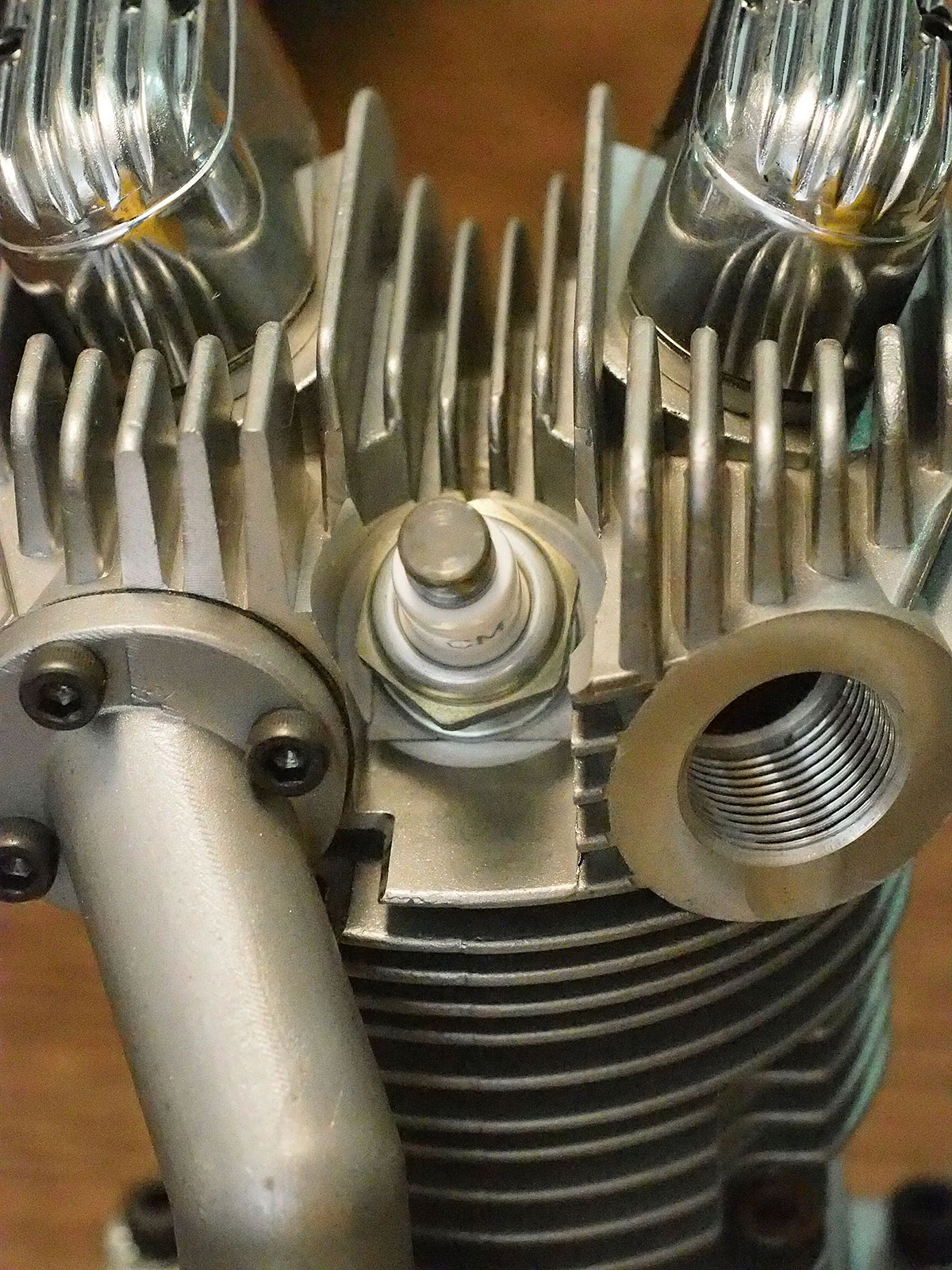
Ceramic bearings are finding usage not only in model engines and parts, but also in bicycle parts as well. Some manufacturers use loose ceramic balls in their wheel components. These are usually black or dark gray balls, and tend to look similar to the naked eye. A quick inspection with a loupe would immediately spot the worn out balls or ball races, saving time and effort before any full reassembly. Even in camera equipment, be it original lenses or third party adapters, there are situations where the fitting seems to be a little too tight or hard to press in. Looking through a loupe has let me see the high spots or offending areas that could be polished or fitted to give a much smoother interface.
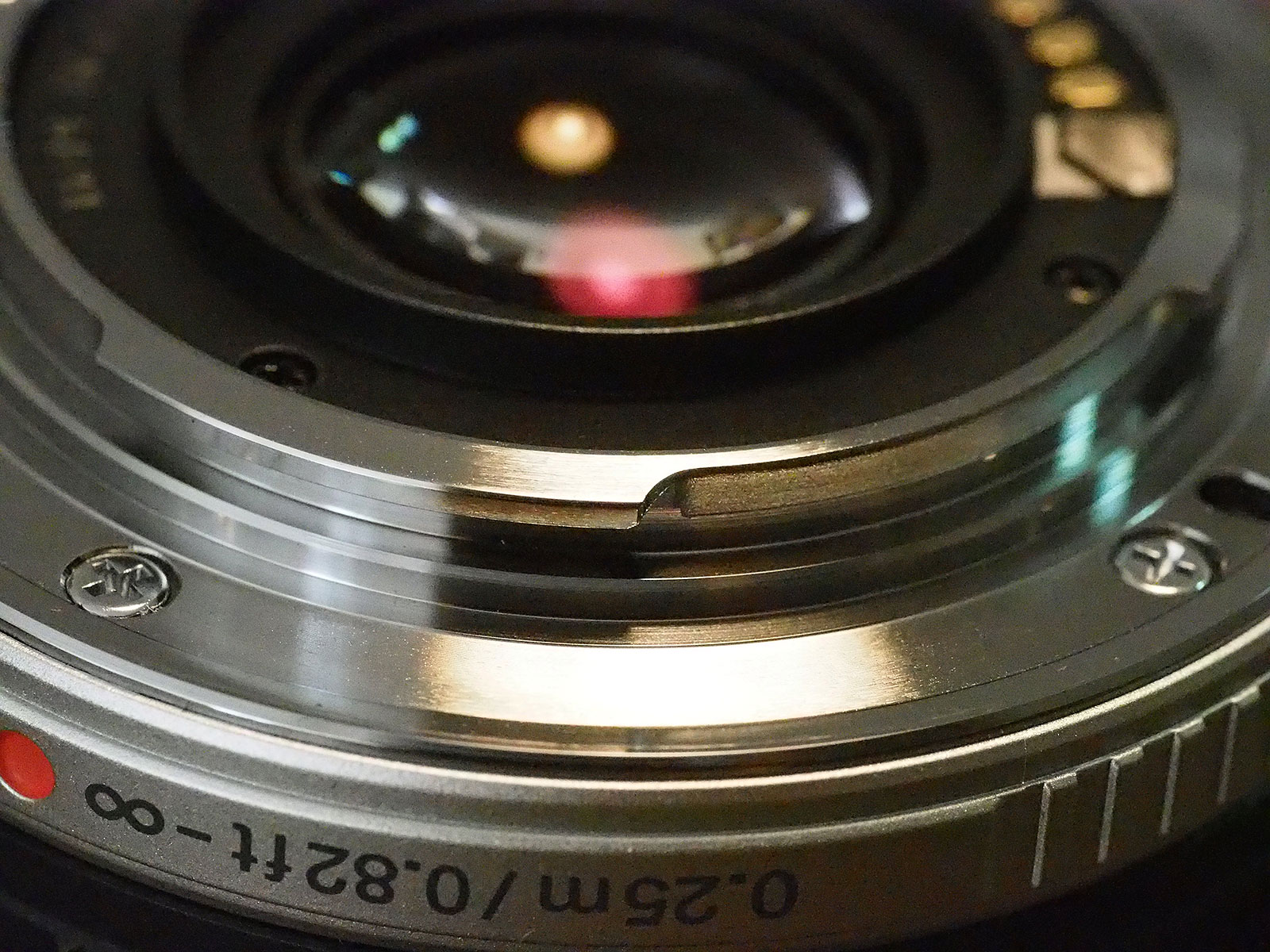
The cost At US$525, the basic Model 01 is pricey. Fancier versions with carbon fibre or alligator wrapping range from US$625 to US$800. It’s a lot of money for a loupe but not so much compared to watch-related accessories like straps and buckles. Though loupes from the likes of Leica are superior in some respects, in its price range Loupe System provides the best optics and image. That being said, the freebie loupes given out by watch brands will suffice for most casual collectors; Loupe System is a specialised product for enthusiasts who want a very sharp image. In summary In the past few months of using the Loupe System, I have started to appreciate it more and more as a portable loupe. Even though it is bulkier than the standard pocket loupe, the main advantages of having a larger diameter and rubber clad housing make it the most comfortable to see through, and least intimidating to use or bring anywhere. In terms of outright optical sharpness, it is only a close second to a specialized loupe like the Leica Loupe, and in terms of its overall performance and usage, it’s the one loupe that I would definitely choose to keep. Loupe System is available directly from its maker online.
Back to top.

